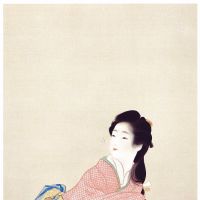During the Taisho Era (1912-26), the weak health of the Emperor led to a shift in power to the Diet of Japan and the nation's democratic parties. It became an era known as the Taisho democracy, when democratic and liberal movements became stronger and people placed more emphasis on individuality. These new values also influenced the world of nihonga (Japanese-style painting).
In 1914, the third year of the Taisho Era, the renowned nihonga painter Taikan Yokoyama (1868-1958) resurrected the Nihon Bijutsuin (Japan Art Institute), which had foundered a year earlier when its original founder, Tenshin Okakura, died. Many other art associations were also established during this time, such as Kinreisha and Kokuga Shosaku Kyokai. The 35 works on show reveal how Taisho Era artists sought to not only express their individual styles but also highlight changes in society through their art; till Feb. 29.
Adachi Museum of Art; (0854) 28-7111; 320 Furukawa-cho, Yasugi-shi, Shimane; free shuttle bus from Yasugi and Yonago stations, Sanin Honsen Line. 9 a.m.-5 p.m. daily. ¥2,200. www.adachi-museum.or.jp.



